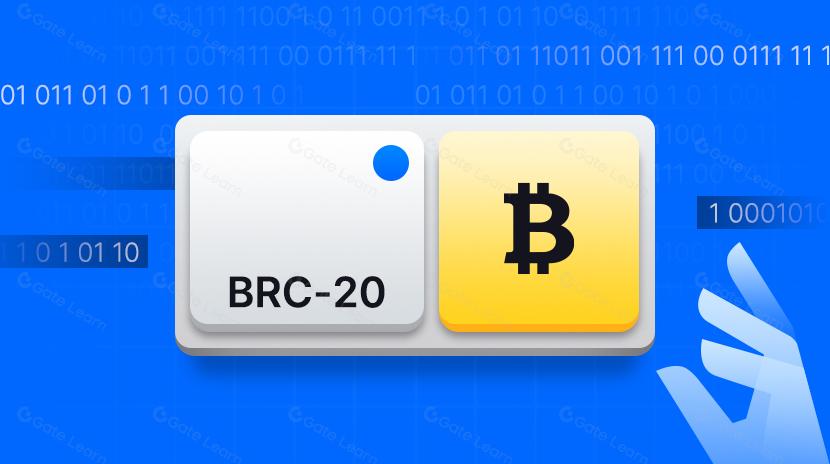Bitcoin’s midlife crisis: Can the OG crypto win over Gen-Z before it’s too late?
Welcome to Slate Sunday, CryptoSlate’s weekly feature showcasing in-depth interviews, expert analysis, and thought-provoking op-eds that go beyond the headlines to explore the ideas and voices shaping the future of crypto.
Bitcoin started its life as a rank outsider. It didn’t emerge from Silicon Valley ingenuity or the boardrooms of central banks. Rather, Bitcoin’s arrival in the fallout of the Great Financial Crisis was both perfectly timed and profoundly subversive.
A whitepaper posted to a cypherpunk mailing list by the mysterious Satoshi Nakamoto pitched a peer-to-peer payment network that could bypass the compromised machinery of post-2008 finance.
Bitcoin was “F-you money,” a pure play against bailouts, bank failures, and central planning. Early adopters saw themselves as digital renegades, building the rails for a new kind of freedom money. Uncensored, borderless, and untethered by the whims of officials and the failures of ageing institutions. Satoshi posted on January 17, 2009:
“It might make sense just to get some in case it catches on. If enough people think the same way, that becomes a self fulfilling prophecy.”
From original rebel to institutional darling
Within 15 years, Bitcoin went from a nerdy whitepaper to a global monetary network worth more than $2 trillion. Regulatory acceptance, once the farthest horizon, finally broke into daylight; first with cautious overtures, then with headline approval. U.S. Treasury Secretary Scott Bessant remarked on the anniversary of Bitcoin’s inception:
“17 years after the white paper, the Bitcoin network is still operational and more resilient than ever. Bitcoin never shuts down.”
With each milestone — spot ETF launches, Wall Street allocating billions, Washington passing bills, or Bitcoin held on public company balance sheets — the original rebel seemingly conquered every mountain.
But with legitimacy comes a slower-moving threat: relevance. The technologies that shake the world only live so long as their stories resonate. And the next generation isn’t buying it.
The graveyard of Bitcoin obituaries
To write Bitcoin’s obituary has become a tired genre (if not an industry). Whether it was the ambiguity of early code, Mt. Gox’s catastrophic hack, China’s mining ban, regulatory hammer blows, or the specter of quantum computing, there have been more than 450 headlines declaring Bitcoin dead.
Warren Buffett, “Oracle of Omaha,” called it “rat poison squared.” Jamie Dimon jibed:
“I’ve always been completely opposed to crypto, Bitcoin, etc. The only true use case for it is criminals, drug traffickers… money laundering, tax avoidance… If I was the government, I’d close it down.”
Yet each crisis seems to strengthen Bitcoin’s immune system. After every regulatory scare, security meltdown, or bear market, the network persists, blocks keep ticking, and a new narrative has emerged: Bitcoin is unstoppable.
That belief has become so pervasive that even the likes of Russian President Vladimir Putin have repeated it on record:
“Bitcoin, who can ban it? Nobody. And who can prohibit the use of other electronic payment instruments? Nobody, because these are new technologies.”
Indeed, Bitcoin has become the spiritual successor to gold for the digital millennial class: anti-fragile, and (if survival counts for anything) immortal.
But as Casa CSO and Bitcoin security expert Jameson Lopp previously told CryptoSlate that the greatest threat to Bitcoin isn’t technological magic or regulatory jousting. In 2025, it’s apathy: not enough young people care.
Gen-Z: Short on cash, short on Bitcoin
‘Zoomers’, the cohort born into iPhones and Instagram, raised on YouTube and TikTok, and entering adulthood amid “late capitalism” fatigue, are rewriting the economic playbook.
The average Gen-Z graduate faces stagnant wages, remote odds of affording a mortgage, evaporating entry-level jobs, and new levels of credit card debt. When “the future” doesn’t exist beyond the next paycheck, why store value for tomorrow? As Sean Ristau, VP of Digital Assets at InvestiFi, told CryptoSlate:
“Bitcoin began as a direct challenge to the financial system, a form of protest. Now it more resembles digital gold, primarily controlled by whales and banks. For young people dealing with inflation, debt, and rising costs, that image doesn’t connect.”
Bitcoin, for all its market machismo, looks suspiciously boomerish to much of Gen-Z. Its earliest champions wear the battle scars of 2008, while Zoomers have only known meme stocks, Robinhood options, and dog tokens.
CIO of ProCap BTC and Bitwise advisor Jeff Park warns that Bitcoin’s narrative needs to change. Gen-Z craves meaning, he argues, not inflation hedges, and:
“In the end the whole Bitcoin thesis breaks if the young don’t buy.”
Discussing the same issue on a recent What Bitcoin Did podcast, American HODL acknowledged:
“It’s actually a massive problem that Gen-Z doesn’t have enough interest in Bitcoin because they’re too nihilistic. We have to continue to reach out and try and shake them awake, and be like, “Dude, do something now before it’s too late!” from a self-preservation standpoint and for their own good. It’s both things.”
The political backdrop: Red vs. blue HODLing
Partisan divides around Bitcoin have never been sharper, either. When the Biden administration doubled down on Choke Point 2.0 against crypto businesses, the party line became “crypto bad, oversight good.”
In contrast, MAGA Republicans, libertarian stalwarts, and some moderate centrists now see embracing Bitcoin as a way to show support for fiscal independence and national renewal.
But Zoomers are tuning out. They’ve flocked to online communities where solidarity trumps speculation. The politics of Bitcoin, once pitched as freedom from governments, now struggle against rising tides of economic anxiety and rampant distrust not just in DC, but in anything institutional. Park warned:
“There is a reason the socialist candidates are not embracing Bitcoin in elections – it’s not because they are afraid of “the establishment,” they have come to the conclusion it hurts them. This is unequivocally bad. Bitcoin and Mamdani has to be the same platform for Bitcoin to win, not Bitcoin and Ackman.”
While Trump and a rising cadre of Republican voices embrace Bitcoin as patriot tech, left-leaning Gen-Zers turn toward socialist firebrands like Zohran Mamdani. Bitcoin gets cast as a libertarian side hustle (or worse), part of the stodgy old guard. Either way, a far cry from the street-savvy rebel it once was.
Why Bitcoin’s philosophy fails to land
Bitcoin’s original pitch of freedom from banks, inflation-proof savings, and digital unseizability just doesn’t spark much excitement among young people. For them, money is less like a fortress to defend and more like a set of points in an endless game: always in play and constantly moving. CMO of Bitget Wallet, Jamie Elkaleh, told CryptoSlate:
“Gen Z’s investment culture is faster, social, and memetic. They gravitate toward community-driven tokens, AI-linked assets, and creator economies because these feel participatory and align with their digital behaviors.
Younger users often see Bitcoin as an asset for funds and treasuries rather than a platform where they can participate directly… Bitcoin’s narrative as “digital gold” offers security and prestige but lacks the interactive, purpose-driven energy that defines this generation’s engagement with finance.”
Ristau added:
“Crypto ownership is growing fast (more than half of Gen Z has owned digital assets at some point), but Bitcoin’s audience still skews older, wealthier, and mostly male. Younger users are chasing very different things: memecoins with a purpose, AI-linked tokens, and social or gaming projects that feel fun, useful, or community-driven. So why the disconnect?”
Demographic problem or demographic opportunity?
Is it any wonder that young people under 25 are increasingly disenchanted with the world and their place in it? High inflation, inaccessible wealth-building, and zero trust in the institutions their parents relied on.
Paradoxically, this struggle could drive the next wave of adoption. Grant Cardone, CEO of Cardone Capital, told CryptoSlate:
“There’s no ‘youth dilemma’ in Bitcoin. The real problem isn’t the age of the holders; it’s the mindset. Gen-Z has been told to trade memes instead of build wealth. They’re chasing fast money instead of legacy money. Bitcoin was built for people who think long-term, who understand that control, scarcity, and freedom are the foundation of wealth.”
In this case, Bitcoin’s supposed “demographic problem” becomes more of a demographic opportunity. A new wave, led by a generation ready to claim digital ownership. As Elkaleh emphasized:
“Bitcoin’s youth dilemma stems from a widening gap between its institutional maturity and its cultural relevance. Ownership among younger investors hasn’t vanished, but their first touchpoint increasingly comes from culture-linked assets, not BTC. While institutions and ETFs have strengthened Bitcoin’s credibility, they’ve also shifted its center of gravity away from grassroots, online-native communities.”
Bridging the gap: Bitcoin and youth culture
So, how does Bitcoin move beyond its graying investor base and attract the creators, gamers, and digital entrepreneurs of Gen-Z? The answer is utility, trust, and culture. Cardone is matter-of-fact:
“Bitcoin doesn’t need to ‘change’ for Gen Z; Gen Z needs to wake up to Bitcoin. But I’ll tell you what will make it more appealing: education, empowerment, and experience.”
Ristau believes the focus should be more on Bitcoin’s utility and growing use cases worldwide. He points out:
“Inflation hedge, financial freedom, and lower global remittance costs are essential considerations. Crypto remittances have increased by more than 400% in recent years. That story should be front and center.”
Elkaleh doubles down on the need to rejuvenate Bitcoin’s message and place it firmly on utility as well:
“Equally important is a narrative refresh. The “digital gold” framing resonates with institutions and long-term investors but fails to explain Bitcoin’s human utility. For younger users, Bitcoin’s relevance comes from what it enables—privacy, self-custody, censorship resistance, and cause-driven transactions. Tying these principles to tangible experiences, such as remittances or community donations, can make Bitcoin meaningful beyond price.”
Bitcoin has endured more existential threats than any digital creation, outlasting the dark prophecies of decline from Wall Street’s titans to the regulatory halls of power. But the greatest threat may be losing the spark of youth: the rebels, dreamers, and builders who gave Bitcoin its soul.
Whether Bitcoin becomes a museum piece or world-changing money will depend, as ever, on who cares enough to carry the torch.
Ultimately, the survival of “freedom money” depends on shifting the narrative from legacy to a story of meaning. Bitcoin was never supposed to be boring. And to thrive into the next decade and beyond, it needs to feel vital, not simply valuable.
Disclaimer:
- This article is reprinted from [CryptoSlate]. All copyrights belong to the original author [Christina Comben]. If there are objections to this reprint, please contact the Gate Learn team, and they will handle it promptly.
- Liability Disclaimer: The views and opinions expressed in this article are solely those of the author and do not constitute any investment advice.
- Translations of the article into other languages are done by the Gate Learn team. Unless mentioned, copying, distributing, or plagiarizing the translated articles is prohibited.
Related Articles

In-depth Explanation of Yala: Building a Modular DeFi Yield Aggregator with $YU Stablecoin as a Medium

BTC and Projects in The BRC-20 Ecosystem

What Is a Cold Wallet?

Blockchain Profitability & Issuance - Does It Matter?

Notcoin & UXLINK: On-chain Data Comparison
